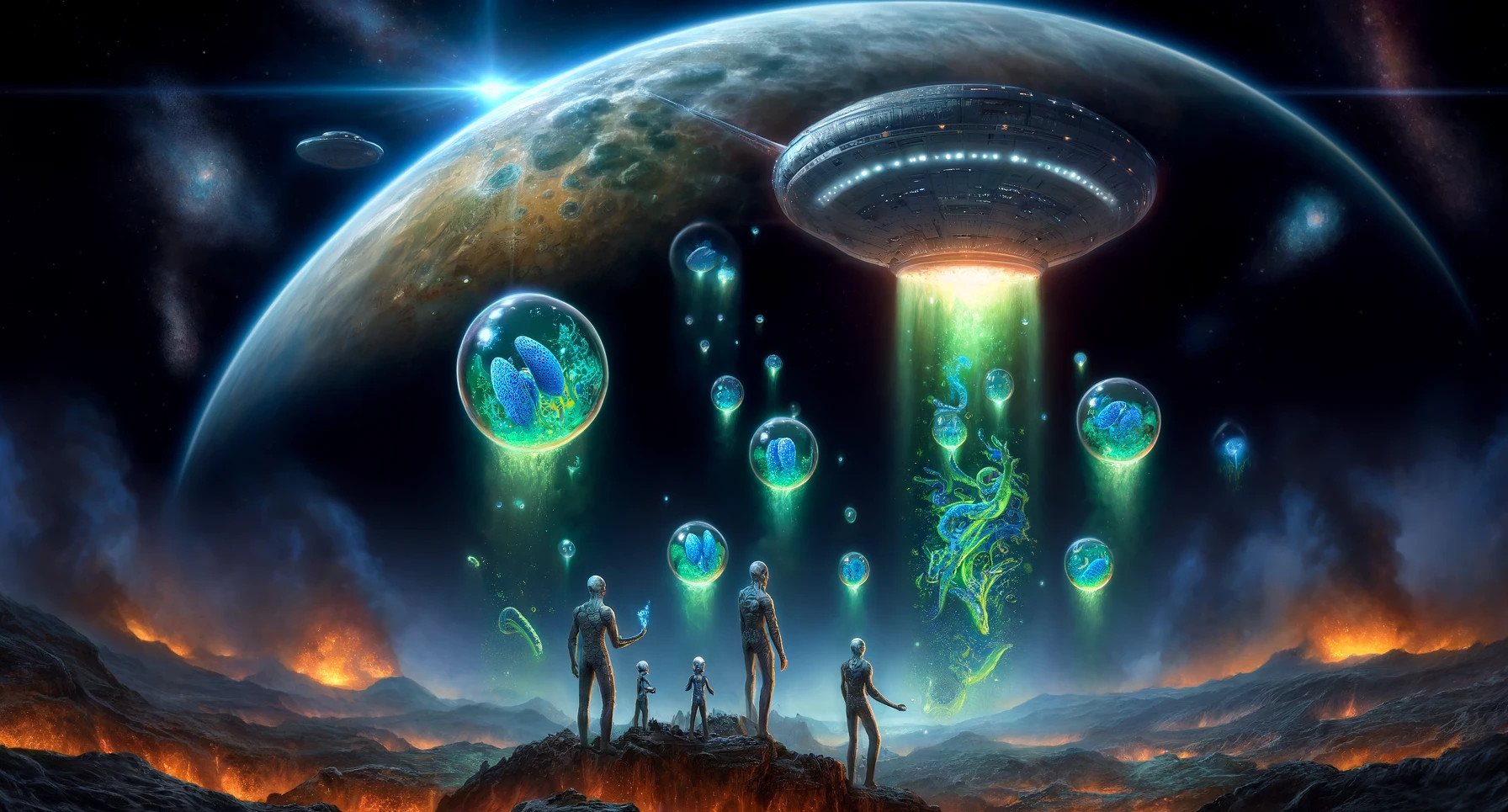Panspermia is a hypothesis that suggests life on Earth and potentially other planets has originated from microorganisms or biochemical compounds present in outer space. According to this theory, these life forms or their precursors could have been transported through space by meteoroids, asteroids, comets, or cosmic dust, eventually reaching and seeding Earth or other celestial bodies.
The concept of panspermia is intriguing because it offers an explanation for how life could spread across the universe, potentially bridging vast distances between stars or even galaxies. It raises the possibility that life could be more widespread in the cosmos than previously thought.
There are different forms of panspermia:
- Lithopanspermia: This involves the transfer of life between planets within the same solar system. Life could be transported on rocks ejected from a planet’s surface after an impact, which then travel to another planet.
- Radiopanspermia: This suggests that life could be transported by radiation pressure from stars on light or dust particles across interstellar distances.
- Directed Panspermia: A form where advanced civilisations intentionally send microorganisms to colonise habitable planets.
Directed Panspermia
The concept of intelligent life initiating panspermia, often referred to as “directed panspermia,” is an idea that suggests advanced civilisations could deliberately seed other planets with life. This could be done for various reasons, such as spreading life to ensure its survival, conducting large-scale astroengineering, or even terraforming planets to make them habitable for future colonisation notion was notably popularised by the Nobel Prize-winning chemist Francis Crick and the biochemist Leslie Orgel in the 1970s.
They proposed that life on Earth might have been seeded by an advanced extraterrestrial civilisation, possibly as a way to propagate life throughout the universe.
Directed panspermia falls under the category of ‘speculative science’ and is not supported by direct empirical evidence as of now but relies on a combination of scientific principles from biology, astrobiology, and space technology to form a coherent scenario.
Directed panspermia involves several speculative elements:
The existence of advanced extraterrestrial civilisations capable of such an endeavour.
The technological means to transport and successfully implant life on distant planets.
The motivations and ethical considerations that such a civilisation might have for undertaking such an action.
Motivations behind directed panspermia
A civilisation might undertake directed panspermia for several reasons, primarily centred around the preservation and propagation of life. One motivation could be a desire to ensure the survival of their species or life in general, especially if their home planet faces imminent threats such as a dying star, catastrophic climate change, or other existential risks.
Alternatively, a civilisation could see directed panspermia as a form of cosmic altruism, aiming to seed life in barren parts of the universe to create new ecosystems or even to kickstart evolutionary processes on other planets.
There might also be scientific motives, such as conducting a vast experiment to understand how life adapts and evolves in different environments.
Finally, some advanced civilisations might view directed panspermia as a legacy or a way to leave a mark on the cosmos, spreading life as a testament to their existence and technological prowess.
While directed panspermia is often discussed in terms of altruistic or survival-oriented motivations, it could theoretically be pursued for more sinister purposes, such as the creation of a future slave race. In this scenario, an advanced civilization might engineer life forms specifically designed to be subservient or easily dominated, seeding them on habitable planets. These beings could be genetically or behaviorally conditioned to lack certain freedoms or capacities for resistance, making them ideal laborers or servants for the civilization’s future use. This could be part of a long-term strategy to exploit new worlds for resources without the ethical or logistical complications of using their own population. Such an approach would raise profound moral questions about the rights and dignity of sentient beings and the responsibilities of those with the power to shape life across the cosmos.
The implications
If the idea of directed panspermia were indeed a reality, it would open up a vast array of possibilities and potentials for humanity. This revelation would fundamentally alter our understanding of life in the universe and our place within it. The knowledge that an advanced civilisation had intentionally seeded life, including humans, would prompt a reevaluation of our origins, purpose, and future in the cosmos. It would also expand our conception of what is possible in terms of technology and ethics, challenging us to think about how we might interact with or respond to such civilisations. Moreover, this could lead to new scientific and philosophical inquiries about life, consciousness, and the potential for humanity to engage in similar endeavours. The implications would be profound, affecting everything from our approach to space exploration and astrobiology to our philosophical and ethical frameworks.
